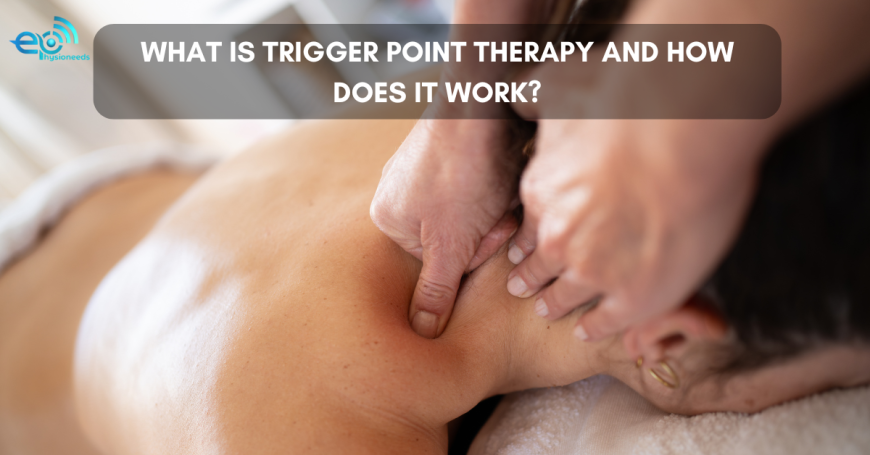What Is Trigger Point Therapy and How Does It Work?
Trigger Point Therapy has become an essential tool in physiotherapy, especially for managing pain and improving muscle function.

Trigger Point Therapy has become an essential tool in physiotherapy, especially for managing pain and improving muscle function. If you're a physiotherapist or a student exploring advanced manual techniques, understanding how trigger point therapy works can significantly enhance your clinical outcomes.
1. What Are Trigger Points?
Trigger points are hyperirritable spots in skeletal muscle that can be felt as nodules or tight bands. These points are sensitive and can cause referred pain—pain felt in areas distant from the actual trigger point.
They are often caused by:
- Muscle overuse
- Stress or poor posture
- Repetitive strain
- Injury or trauma
2. How Trigger Point Therapy Works
Trigger point therapy involves applying focused pressure to these tight bands to release tension, reduce pain, and restore normal muscle function. There are several methods physiotherapists use:
- Manual Compression: Sustained pressure using fingers, knuckles, or elbows directly on the trigger point.
- Dry Needling: Insertion of fine needles into the trigger point to deactivate it.
- Ischemic Compression: Applying pressure until blood flow is reduced, followed by a rush of blood to flush the area.
- Stretch and Spray Technique: Combining muscle stretching with a cooling spray to relieve pain and increase flexibility.
3. Benefits of Trigger Point Therapy for Patients
Pain Relief
Trigger point therapy effectively reduces both localized and referred pain, especially in conditions like tension headaches, neck pain, back pain, and sciatica.
Improved Muscle Function
By releasing knots, muscles can contract and relax more efficiently, improving overall function and range of motion.
Enhanced Circulation
Releasing tight areas allows for better blood flow, which supports healing and nutrient delivery.
Posture Correction
Trigger points often develop due to poor posture. Addressing them helps restore better alignment.
4. Common Conditions Treated with Trigger Point Therapy
- Myofascial Pain Syndrome
- Tension-type Headaches
- Fibromyalgia
- Chronic Neck and Shoulder Pain
- Sciatica
- TMJ (Temporomandibular Joint Disorder)
- Plantar Fasciitis
5. Why Physiotherapists Should Learn Trigger Point Therapy
Trigger point therapy is a must-have skill for modern physios. Here’s why:
- High Patient Demand: More patients seek drug-free, hands-on pain relief methods.
- Versatile Application: Can be used on athletes, desk workers, or post-op patients.
- Quick Results: Often offers noticeable relief in just one or two sessions.
- Career Growth: Adds value to your clinical expertise and increases your treatment options.
6. Conclusion
Trigger Point Therapy bridges the gap between pain and performance. Whether you're helping someone with chronic back pain or an athlete recovering from overuse injuries, learning and applying this technique can bring better results and build trust with your patients.
If you're a physiotherapist aiming to elevate your skills, mastering trigger point therapy can be a game-changer.

 Daulatdb
Daulatdb